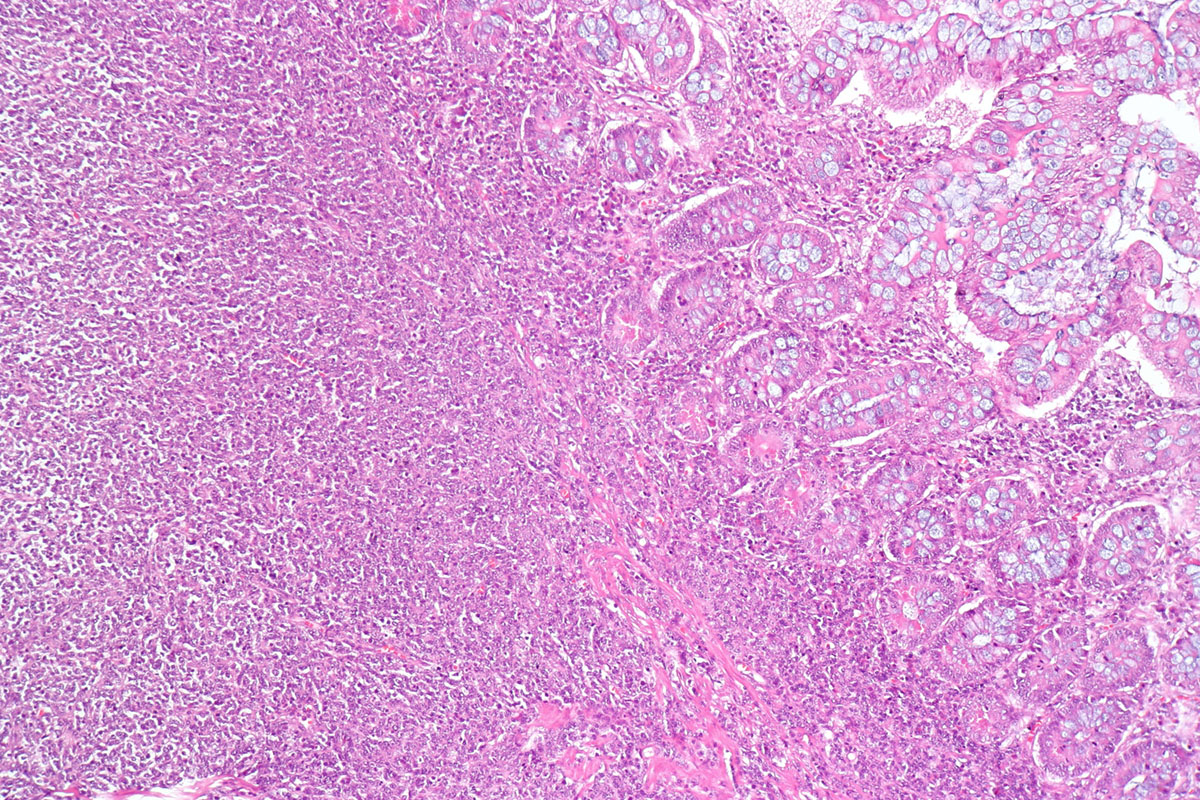
Gastrointestinal tract ends in a form of a large intestine, which is made up of three distinctive parts, including cecum, colon and rectum. The primary function of the large intestine is to physically take in the nutrients in a liquid form, as well as produce feces.
Possible Causes of Pain in the Final Part of Gastrointestinal Tract
Large intestine pain can be caused by numerous factors and it can be located on any part of the intestine, cover more than one area, or spread throughout the whole abdomen. When experiencing large intestine pain, there is usually an array of symptoms that follow, such as diarrhoea, constipation, internal bleeding, high body temperature and so on. There are many health problems that cause pain in the large intestine, one such abnormality being ulcerative colitis, which is a type of inflammation followed by bloody loose bowel and more often than not, reduced appetite. Further, irritable bowel syndrome is another factor known to contribute to serious large intestine pain. As is the case with many other medical conditions that produce large intestine pain, irritable bowel syndrome is followed by various other problems, such as abdominal cramps and feeling bloated. The discomfort caused by this syndrome can be reduced by making changes in the daily food regimen, as well as by including more physical activities to stimulate bowel movement. In addition, there are many medical conditions that attack specific parts of the large intestine. For instance, proctitis is a type of illness that causes the rectum to inflame. Causes of proctitis in particular are numerous and include injury and various types of infections, while the symptoms are bloody stools accompanied by intense pain. Moreover, Chron’s disease is another kind of illness that attacks both the small and the large intestine and as a result causes loose bloody bowel, higher than normal body temperature, bloating and abdominal cramps. Similarly, tumours that cover any part of the large intestine, colon or rectum for instance, especially after being present for a long period of time, will produce severe large intestine pain. Also, chronic constipation leads to debilitating large intestine pain that can be reduced by introducing change in the diet and the amount and frequency of physical exercise. Another kind of condition that results in large intestine pain includes changes that occur on the intestine itself in a form of polyps. Larger polyps can cause lots of difficulties, from severe abdominal pain to even cancer. Finally, there are numerous others types of inflammations that affect one or all of the parts of the large intestine that will, among other symptoms, include blunt kind of pain.
Infection in Intestines
There are various types of infections that the intestines are prone to. Many include infections caused by viruses, or in everyday’s terms, stomach flues. Viral intestinal infections are contagious, so coming into contact with a person who is carrying the virus will most likely result in the development of the stomach flu. Consequently, those individuals with a frail immune system, the elderly, as well as young children, make up the population that is the most prone to viral intestine infections. In many instances, stomach flu can result from a virus entering through contaminated food or drink and how long it lasts depends on the person’s overall health condition, as well as on the strain of the virus itself.
Causes of Viral Intestinal Infections
One of the virus strains that produce stomach flu is an adenovirus. Adenovirus shows its first symptoms approximately 7 days after the initial contact with the virus and it attacks the lining of the intestine, resulting in vomiting and loose bowel. More often than not, adenovirus aggresses toward children younger than 2 years. Further, rotavirus is another kind of children’s stomach flu creator, which leads to intestine pain and high body temperature. It usually affects children aged 3 to 15 months and is in some cases passed onto adults, but the symptoms are much weaker. Astovirus also involves children, but it also attacks older individuals as well. Finally, calciviruses, all four types, concern people of all ages and health conditions and can sometimes spread out of proportion, affecting way too many people at once. Symptoms and Treatment of Viral Intestinal Infections
The symptoms, for the most part, are similar across all strains of viruses that cause intestinal infections and they include loss of fluids, headache, muscle and abdominal pain, loose bowel movement and vomiting. Most of the symptoms last between 2 and 10 days, depending on the person’s overall health, as well as the severity of the virus itself. Finally, treatment for stomach flu usually includes lying in bed for the duration of the symptoms, while eating a doctor recommended diet and taking lots of liquids to prevent dehydration. Any kind of heavy, junk food should not be taken under any circumstances. Instead, steamed veggies are the best way to go.

















Your thoughts on this
Loading...